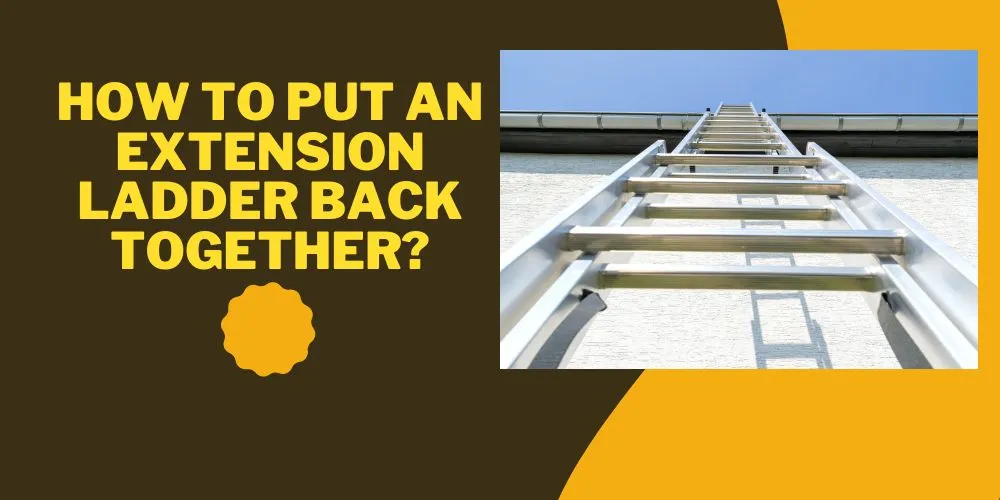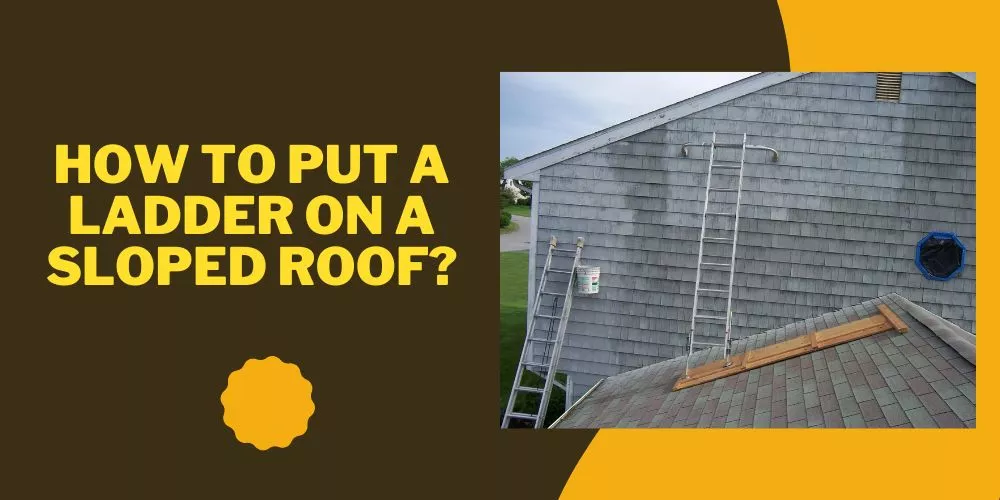Have you noticed that your attic ladder hinge is making creaking sounds or getting loose? If yes, then it’s time to fix your attic ladder hinge before it becomes a safety hazard or causes any further damage.
In this guide, we’ll provide you with step-by-step instructions regarding how to fix attic ladder and pro tips to help you fix your attic ladder hinge with ease.
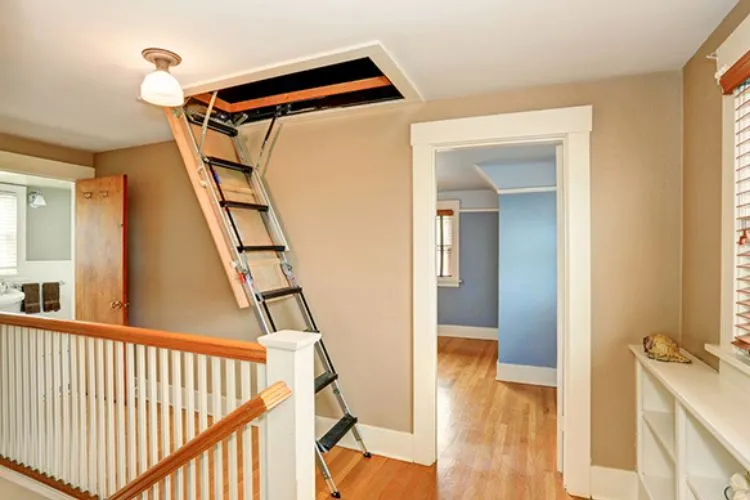
How To Fix Attic Ladder Hinge? Complete Guide
A properly functioning attic ladder hinge is necessary to ensure a smooth and safe operation of your attic ladder. Whether you use it to access your storage space or for home repair, it’s important to have a well-maintained attic ladder hinge for easy and safe use.
A damaged hinge can cause the ladder to wobble, making it unsafe to climb, and may even damage the ladder hardware, all of which can become a safety hazard.
Common Issues with Attic Ladder Hinges: There are several common issues that may arise with attic ladder hinges. These include broken hinges, loose hinges, or rusty hinges which may cause wobbling or difficulty in opening and closing the ladder.
Assessing the Problem
Inspecting the Hinge for Looseness, Corrosion, or Damage. Before fixing your attic ladder hinge, it’s important to inspect the hinge for any looseness, corrosion, or damage.
Make sure to check the screws, brackets, and hinge joints for any signs of wear and tear. Taking the time to inspect the hinge can help you determine the extent of the issue and the repair needed.
Identifying the Type of Hinge Used in Your Attic Ladder
There are several types of hinges that may be used in your attic ladder, including strap hinges, butt hinges, and pivot hinges. Identifying the type of hinge will help you choose the right tools and repair options.

types of hinges commonly used in attic ladders:
Strap Hinges: Strap hinges are long, flat hinges that are typically used for heavy-duty applications.
They consist of two flat plates connected by a hinge pin. These hinges are often found on larger and heavier attic ladders that require extra support. They provide stability and strength to the ladder.
Butt Hinges: Butt hinges are the most common type of hinge used in attic ladders. They consist of two metal plates that are connected by a hinge pin.
These hinges are installed on the side of the ladder and allow it to pivot open and closed. Butt hinges are durable and can support the weight of the ladder.
Pivot Hinges: Pivot hinges are a type of specialty hinge that allows the ladder to rotate around a fixed point.
These hinges are commonly found on folding attic ladders, where the ladder sections fold and stack on top of each other when not in use. Pivot hinges are designed to provide smooth and controlled movement for folding ladders.
When identifying the type of hinge used in your attic ladder, observe the shape, size, and attachment method of the hinge. It may be helpful to take measurements and compare them to the dimensions of different hinge types.
Additionally, consulting the manufacturer’s documentation or contacting the manufacturer directly can provide valuable information about the specific hinge used in your attic ladder.
Knowing the type of hinge used in your attic ladder will enable you to choose the appropriate repair options and ensure that you have the correct tools and replacement parts if necessary.
Tightening Loose Attic Ladder Hinges
If you’ve noticed that your attic ladder hinge is loose, the first step is to tighten the screws and brackets. This can be done by using a screwdriver to tighten the loose screws and brackets with the proper force.
Make sure to tighten each screw or bracket gradually and evenly to ensure an even distribution of force.
Pro Tips for Ensuring a Secure and Durable Fix
To ensure a secure and durable fix, make sure to use the right-sized screwdriver and tighten the screws to the correct torque specification. Check the ladder for any wobbling or looseness after tightening the screws, and if the problem still exists, consider replacing the hinge.
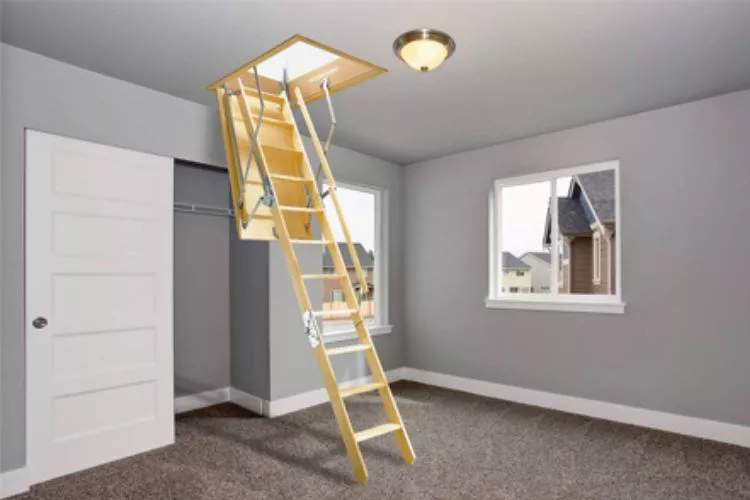
Repairing or Replacing Broken Hinges
Identifying Irreparable or Severely Damaged Hinges. If your attic ladder hinge is severely damaged or broken, it may be irreparable. Check for any cracks or bends in the hinge, which may indicate that it needs to be replaced.
Steps for Replacing a Broken Hinge with a New One
To replace a broken hinge, follow these steps:
- Identify the type of hinge used in your attic ladder and purchase a new one that’s compatible with your ladder.
- Remove the old hinge from the ladder by unscrewing the brackets and screws.
- Attach the new hinge to the ladder using the same brackets and screws.
- Verify if the hinge is properly aligned and secure before using the attic ladder.
Alternative Options for Repairing or Fabricating a Copy of the Hinge
If you’re unable to find a replacement hinge for your attic ladder, you can also consider making a copy of the hinge by using metalworking tools, such as a drill press or a saw.
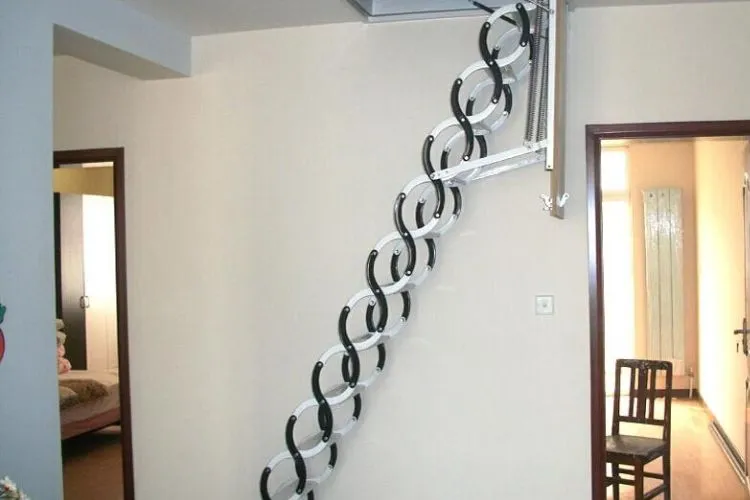
However, it’s important to ensure that the hinge matches the original hinge in terms of dimensions, thickness, and material to prevent any safety hazards.
Lubricating and Maintaining Attic Ladder Hinges
Importance of Regular Lubrication for Smooth Operation. Lubrication is crucial to ensuring that your attic ladder operates smoothly. Without proper lubrication, the hinge can become stiff and difficult to operate, leading to damage to the ladder hardware.
To lubricate your attic ladder hinge and maintain its smooth operation, use a lithium spray grease or silicone spray with a straw attachment for hard-to-reach hinges. Apply a small amount of lubricant to the hinge joints and brackets every six months or as needed.
Pro Tips for Preventing Future Issues
Regular Inspection and Maintenance Routine. To prevent future issues, develop a regular inspection routine for your attic ladder hinge.
Inspect the hinge for looseness, rust, and wear and tear. It’s also important to schedule regular maintenance to ensure that the hinge is well-lubricated.
Best Practices for Extending the Lifespan of Attic Ladder Hinges
To extend the lifespan of your attic ladder hinge, make sure to:
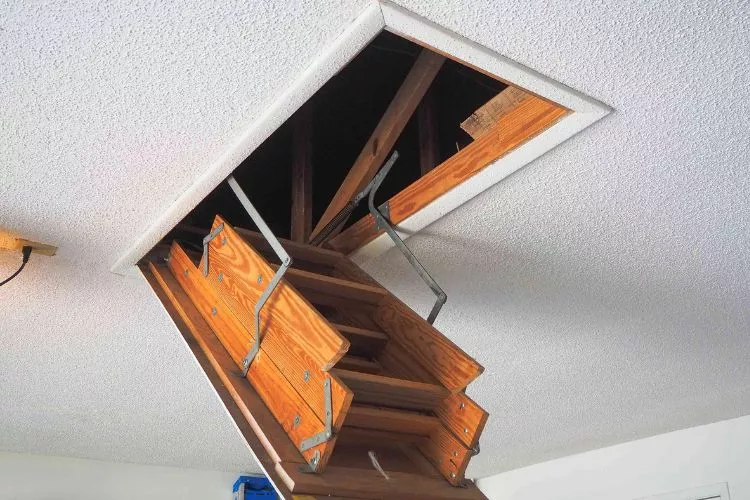
Clean the ladder regularly: Regular cleaning helps prevent the accumulation of dirt, dust, and debris on the ladder and hinges.
Use a soft brush or cloth to remove any debris and dirt from the ladder steps and hinges. Avoid using harsh chemicals or abrasive materials that can damage the surface of the ladder or the hinges.
Lubricate the hinges: Proper lubrication is essential for maintaining smooth operation and preventing excessive wear and tear on the hinges.
Apply a small amount of lubricant, such as a lithium spray grease or silicone spray, to the hinge joints and brackets every six months or as needed. Lubrication reduces friction and prevents rust and corrosion, which can shorten the lifespan of the hinges.
Avoid excessive pressure or weight: Attic ladders have weight limits specified by the manufacturer. It’s important to follow these guidelines and avoid exceeding the recommended weight capacity.
Applying excessive pressure or subjecting the ladder to excessive weight can strain the hinges and cause them to wear out more quickly. Be mindful of the weight of items you carry while climbing the ladder and distribute the weight evenly.
Use the ladder properly: Using the ladder as intended and following the manufacturer’s instructions is crucial for maintaining the hinges’ lifespan.
Avoid jumping or using the ladder in a way that puts undue stress on the hinges. Make sure to step on the ladder steps one at a time and use handrails, if available, for stability.
Store the ladder properly: When the attic ladder is not in use, it’s important to store it in a dry and well-ventilated area.
Moisture and high humidity can lead to rust and corrosion on the hinges, which can weaken them over time. If possible, store the ladder in a protected space away from extreme temperatures and direct sunlight.
By following these best practices, you can significantly extend the lifespan of your attic ladder hinges and ensure smooth and safe operation for years to come. Regular inspection and maintenance routines, as mentioned earlier in the guide, should be included as part of your overall care for the attic ladder hinges.
You may also find useful: How to Fix Attic Ladder Spring | How to Replace an Attic Ladder Hinge Arms
Frequently Asked Questions (FAQs)
Can I Fix a Bent Hinge Pin?
A bent hinge pin can be repaired by using pliers to straighten the pin. However, if the pin is severely bent, consider replacing it.
Where Can I Find Replacement Parts for My Attic Ladder Hinge?
You can find replacement parts for your attic ladder hinge at most home improvement stores or online retailers.
Can a Professional Repair My Attic Ladder Hinge?
Yes, a professional can repair your attic ladder hinge if you’re uncomfortable or unable to do it yourself.
Conclusion:
Fixing your attic ladder hinge is crucial to ensuring that your ladder operates smoothly and safely. Understanding the types of hinges and repair options available can help you easily fix the problem.
Don’t ignore a damaged attic ladder hinge. Fixing the hinge can prevent the issue from worsening and ensure safe use of your attic ladder for years to come.

